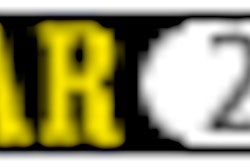
CLEVELAND - Successful PACS implementation is more than just installing new equipment and software, flipping a switch, and having the technology run flawlessly. For PACS to achieve its goal of reducing cost and improving throughput, workflow itself must be reengineered to reflect the new technology.
"Unless you’re committed to change management, the technology will only have modest benefits," said Robert Cooke, vice president of informatics of Agfa Healthcare. Cooke, in a presentation at the 2002 Symposium for Computer Applications in Radiology, outlined a game plan for workflow optimization in a digital imaging environment.
The first step in workflow optimization is to document the facility’s current processes. These benchmarks should describe every step an institution follows to generate a report, from patient folder preparation to patient folder distribution. Each process should also include the amount of time needed to perform each task. The more discrete the definitions are, the more a facility will be to reengineer workflow.
"The better you are at defining your analog workflow, the better able you will be to allow for more automation of complex services," noted Cooke.
A cross-functional team should then be assembled to bring the data together into a comprehensive, department-wide workflow. By bringing together representatives of each area affected by a PACS installation to define and implement workflow, ownership of change will be assumed by those parties experiencing its impact.
For each analog process step, a PACS-based solution should be defined. For example, hanging patient folders as part of intake could be correlated to exam pre-fetching in PACS. Cooke observed that some analog tasks, such as film development and maintaining film chemistry, would disappear altogether in a PACS environment. Each technology solution should have a time metric assigned to it, as well.
Once these processes have been put into place, the results need to be measured and analyzed by the cross-functional teams. This ensures that any process that is not meeting expectations is identified, examined, and improved until it meets the team’s goals.
Metrics other than process change can also be examined as part of the workflow optimization schema. Report turnaround, for example, can change dramatically with a PACS and voice recognition (VR) system implementation. According to Cooke, an analog system of plain film, dictation, and transcription can average approximately 74 hours to generate a report. A PACS and VR solution, in comparison, averages approximately 2 hours to create a report, he said.
As part of the optimization process, technologist productivity increases resulting from the implementation should also be taken into account. In addition, metrics -- such as recaptured revenue from unbilled exams due to missing films in an analog system --should be identified and measured against the equivalent number in the digital environment, Cooke said.
"Optimization is delivering the right information at the right place at the right time and presenting it in the right way. Ultimately it’s all about creating a cost-savings scenario," he said. "After all, if there isn’t going to be a revenue gain, why bother?"
By Jonathan S. BatchelorAuntMinnie.com staff writer
May 2, 2002
Related Reading
Maximizing your investment in enterprise digital imaging, April 18, 2002
Speech recognition, structured reporting eyed for efficiency gains, March 16, 2002
Radiology workstations need integration, automation, March 15, 2002
Copyright © 2002 AuntMinnie.com

















